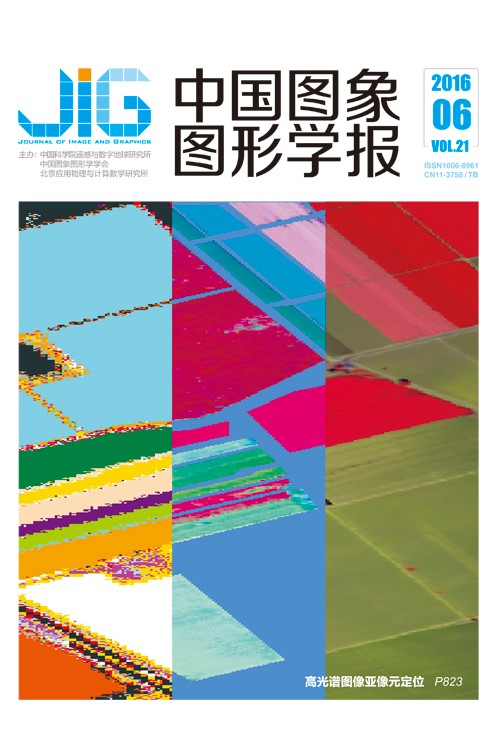
基于目标优化的高光谱图像亚像元定位
摘 要
目的 高光谱图像混合像元的普遍存在使得传统的分类技术难以准确确定地物空间分布,亚像元定位技术是解决该问题的有效手段。针对连通区域存在孤立点或孤立两点等特例时,通过链码长度求周长最小无法保证最优结果及优化过程计算量大的问题,提出了一种改进的高光谱图像亚像元定位方法。方法 以光谱解混结合二进制粒子群优化构建算法框架,根据光谱解混结果近似估计每个像元对应的亚像元组成,通过分析连通区域存在特例时基于链码长度求周长最小无法保证结果最优的原因,提出修改孤立区域的周长并考虑连通区域个数构造代价函数,最后利用二进制粒子群优化实现亚像元定位。为了减少算法的时间复杂度,根据地物空间分布特点,采用局部分析代替全局分析,提出了新的迭代优化策略。结果 相比直接基于链码长度求周长最小的优化结果,基于改进的目标函数优化后,大部分区域边界更明显,并且没有孤立1点和孤立两点的区域,识别率可以提高2%以上,Kappa系数增加0.05以上,新的优化策略可以使算法运算时间减少近一半。结论 实验结果表明,本文方法能有效提高亚像元定位精度,同时降低时间复杂度。因为高光谱图像中均匀混合区域不同地物的分布空间相关性不强,因此本文方法适用于非均匀混合的高光谱图像的亚像元定位。
关键词
Sub-pixel mapping of hyperspectral imagery based on object optimization
Zhao Liaoying1, Fan Mingyang1, Li Xiaorun2, Chen Chen2(1.Institute of Computer Application Technology, HangZhou Dianzi University, Hangzhou 310018, China;2.College of Electrical Engineering, Zhejiang University, Hangzhou 310027, China) Abstract
Objective Traditional classification technologies cannot easily or accurately determine the spatial distribution of ground features for hyperspectral images because mixed pixels are widespread throughout the image. Sub-pixel mapping technology is an effective tool to solve this problem. The existing sub-pixel mapping methods that are based on linear optimization encounter two issues in their practical implementation: their inexact objective functions and their excessive computation. Method This paper proposes a new sub-pixel mapping method to solve the aforementioned problems. The algorithm framework is constructed by combining spectral unmixing with binary particle swarm optimization. The numbers of sub-pixels for each pixel are estimated according to the results of spectral unmixing. The regional perimeter is modified by analyzing the influence on the perimeter and region number as induced by some special cases, such as isolated point or regions that include only two points. The cost function is formulated by considering the regional perimeter and number of connected regions. To reduce the running time of the algorithm, global analysis is replaced with local analysis according to the feature space distribution characteristics, and a new iterative optimization strategy is proposed. Result Compared with directly minimizing the region circumference based on the image chain code, the modified object function emphasizes the boundary of most regions and does not yield any isolated points or regions that include only two points. The method also improves the recognition rate by more than 2% and the Kappa coefficient by more than 0.05. Moreover, the new iterative optimization strategy nearly halves the CPU time. Conclusion The experimental results show that the proposed algorithm can improve the mapping accuracy and that the proposed optimization strategies can accelerate the mapping. Given the weak spatial correlation in areas where the end members are uniformly mixed, the proposed algorithm is suitable for hyperspectral images without uniformly mixed areas.
Keywords
binary particle swarm optimization hyperspectral imagery sub-pixel mapping space correlation hyperspectral unmixing
|



 中国图象图形学报 │ 京ICP备05080539号-4 │ 本系统由
中国图象图形学报 │ 京ICP备05080539号-4 │ 本系统由